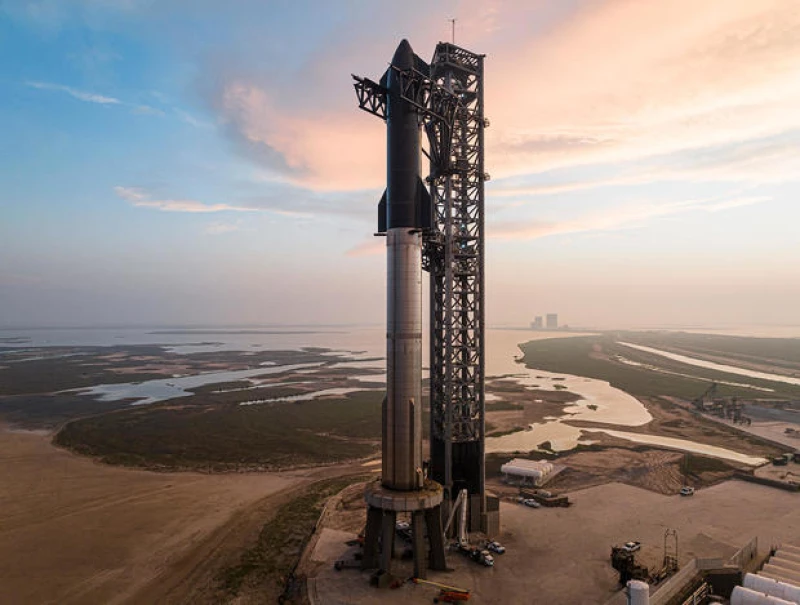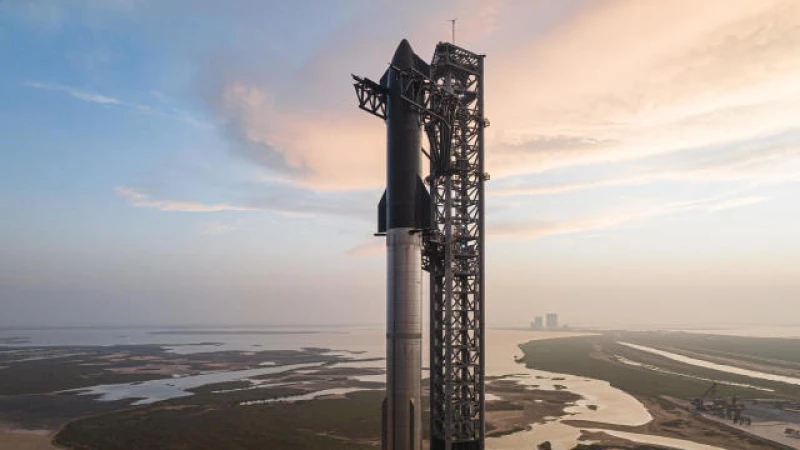SpaceX's huge Super Heavy-Starship rocket, by far the most powerful ever built, was primed for launch on its third test flight Thursday, an attempt to boost the unpiloted upper stage into space for a sub-orbital hop to a controlled re-entry and splashdown in the Indian Ocean.
Liftoff from SpaceX's Boca Chica, Texas, flight test facility on the Gulf Coast was planned for 8:30 a.m. EDT, kicking off an eight-and-a-half-minute climb to space.
The flight follows formal clearance from the Federal Aviation Administration, issued late Wednesday, that concluded "SpaceX met all safety, environmental, policy and financial responsibility requirements."

Problems with previous test flights
Two previous test flights ended with spectacular self-destruct conflagrations — the first, last April, after multiple Super Heavy engine shutdowns and a stage separation malfunction and the second, in November, just before the Starship would have started a planned loop around the planet for a splashdown in the Pacific Ocean north of Hawaii.
SpaceX engineers modified multiple systems in the wake of the failures, including work to beef up the rocket's self-destruct system, to improve engine performance and to protect the pad with a high-power water deluge system that also deadens the acoustic shock of engine ignition.
The company also utilized a technique known as "hot staging" during the Starship's second flight test. This method involved igniting the Starship's six Raptor engines while still attached to the Super Heavy booster. Hot staging, a technique long used by Russian Soyuz rockets, aims to optimize the stage-separation process for increased efficiency.
SpaceX highlighted the success of Starship's second flight test, noting the achievement of significant milestones and the collection of valuable data for the continuous development of the spacecraft. The company emphasized its commitment to a rapid iterative development approach, which has been instrumental in driving SpaceX's major technological advancements.
Objectives for the third Super Heavy-Starship test flight
The goals set for the third test flight were notably ambitious, aiming to propel the Starship into space for a sub-orbital flight with various inaugural tests. The mission also aimed to execute controlled landings of both stages - the Super Heavy in the Gulf of Mexico and the Starship in the Indian Ocean.
While the stages are designed for full reusability, no recovery plans were in place for this test flight. Both stages were anticipated to undergo rocket-powered descents simulating real landing procedures, ultimately breaking up and sinking upon ocean impact.
Additionally, flight controllers planned to conduct a test of the payload door during the Starship's coast toward entry, a feature intended for future flights to deploy Starlink satellites.
Of particular interest to NASA, the mission aimed to demonstrate the transfer of cryogenic propellants between tanks in the weightless environment of space and to perform the first engine restart of a Raptor engine outside the Earth's atmosphere.
SpaceX and NASA have reached critical milestones with the successful completion of the propellant transfer test and Raptor restart. NASA has invested billions in SpaceX to develop a Starship variant for the Artemis moon program, specifically for the Human Landing System (HLS).
The HLS will undergo automated refueling in Earth's orbit by multiple Super Heavy-Starship tankers. After refueling, the HLS will restart its engines and journey towards the moon, where it will await the arrival of astronauts. The spacecraft will then transport the astronauts to and from the lunar surface.
For each HLS flight to the moon, approximately 10 refueling flights will be required, highlighting the complexity and precision of this mission.







